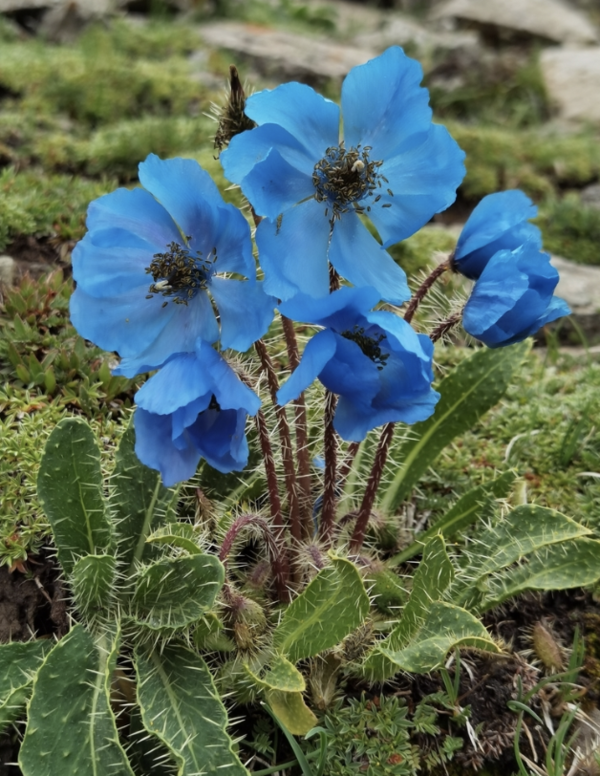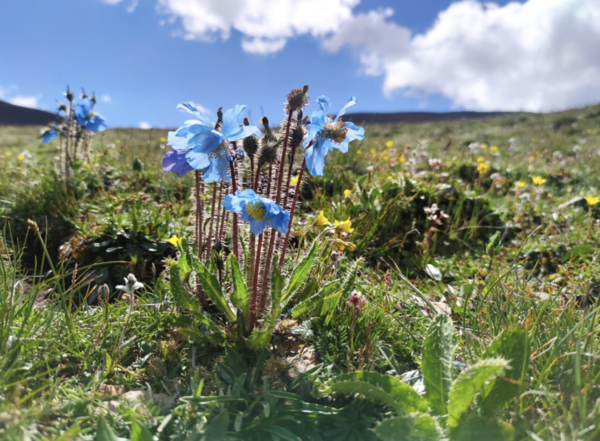Meconopsis horridula, commonly known as the spiny blue poppy, is a captivating flowering plant that has drawn attention from botanists, gardeners, and plant enthusiasts alike. Known for its stunning, delicate blue flowers and intriguing features, this species is a must-know for anyone interested in unique plants. Whether you're looking to cultivate one in your garden or just learning about its unique traits, this comprehensive guide covers everything you need to know about Meconopsis horridula.
Meconopsis horridula, often referred to as the spiny blue poppy due to its striking blue flowers and spiny foliage, is a perennial plant native to the mountainous regions of Asia. It belongs to the Papaveraceae family, which includes other well-known species like the opium poppy. While the plant is famous for its eye-catching flowers, it’s the unique combination of spiny stems, leaves, and flowers that makes it stand out among other poppies.

Colorful Flowers: The most notable feature of this plant is its bright, vivid blue flowers, which appear in late spring to early summer. These large, cup-shaped blooms can be up to 7 cm (2.8 inches) in diameter, creating a striking contrast against the lush green foliage.
Spiny Leaves: True to its name, the leaves of Meconopsis horridula are spiny and leathery. This gives the plant a somewhat rugged appearance, but also helps it thrive in its native mountainous habitats.
Habitat: Meconopsis horridula thrives in cool, temperate climates and is typically found growing in rocky, high-altitude environments. In its natural range, it is often spotted at elevations ranging from 2,500 meters (8,200 feet) to 4,000 meters (13,100 feet) above sea level.
Growth Habit: The plant grows in a rosette formation and can reach a height of up to 60 cm (24 inches). Over time, it forms a mound-like shape that can spread out to form a clump.
Meconopsis horridula can be a bit tricky to grow, as it requires specific conditions to thrive. However, with the right care, it can make a beautiful addition to your garden or landscape. Here are some tips for growing this fascinating plant:
Meconopsis horridula prefers well-drained, acidic soil. It does not tolerate waterlogged or overly alkaline soils. If you have heavy or clayey soil, consider amending it with organic matter or planting in raised beds where drainage is improved.
The spiny blue poppy thrives in partial shade. It can tolerate some direct sunlight, especially in cooler climates, but it should be protected from the harsh midday sun, which can cause the leaves to scorch.
As a high-altitude species, Meconopsis horridula does best in cooler temperatures. It can handle frost and light freezes, making it ideal for gardens in temperate zones. However, it may struggle in hot, humid climates.
Regular watering is essential, but the plant does not like to sit in water. Ensure that the soil remains moist but not soggy. During dry spells, give the plant a thorough watering but avoid overwatering, as this can lead to root rot.
Meconopsis horridula can be propagated by seed or division. Seed propagation can be a bit slow, and the seeds require cold stratification before germination. For those less patient, division of mature clumps can also be an effective method, especially in spring or early autumn.
While Meconopsis horridula is relatively resilient, it can occasionally fall prey to pests like aphids or slugs, which are drawn to its soft leaves. Regularly inspect your plants for any signs of pest damage. Additionally, over-watering can lead to fungal diseases like powdery mildew or root rot, so it’s essential to maintain good soil drainage.

In many cultures, poppies, including the Meconopsis genus, symbolize peace and remembrance. The blue color of Meconopsis horridula is often associated with tranquility, and its beauty has made it a beloved subject of gardens and botanical art.
Meconopsis species, in general, are considered somewhat rare and special, especially in areas where they do not grow natively. The spiny blue poppy’s ability to thrive in harsh conditions is a testament to nature's resilience, and it’s admired by plant lovers around the world.
If you’re looking to add something truly unique to your garden, Meconopsis horridula is an excellent choice. Its rare blue flowers are sure to attract attention and make your garden stand out.
Once established, Meconopsis horridula is relatively low-maintenance, requiring minimal care beyond regular watering and occasional pest control.
The large, vibrant flowers of Meconopsis horridula attract bees, butterflies, and other pollinators, making it a great plant for creating a more biodiverse garden.
Meconopsis horridula is an exceptional plant that brings a splash of color and beauty to any garden or landscape. Its striking blue flowers and spiny, textured foliage make it an eye-catching addition to any collection. Although it requires a bit of care and the right growing conditions, the reward of seeing this rare and beautiful plant bloom is well worth the effort. Whether you're a seasoned gardener or just starting, Meconopsis horridula is a fascinating species that adds charm and uniqueness to your gardening experience.
animal tags: Papaveraceae
We created this article in conjunction with AI technology, then made sure it was fact-checked and edited by a Animals Top editor.